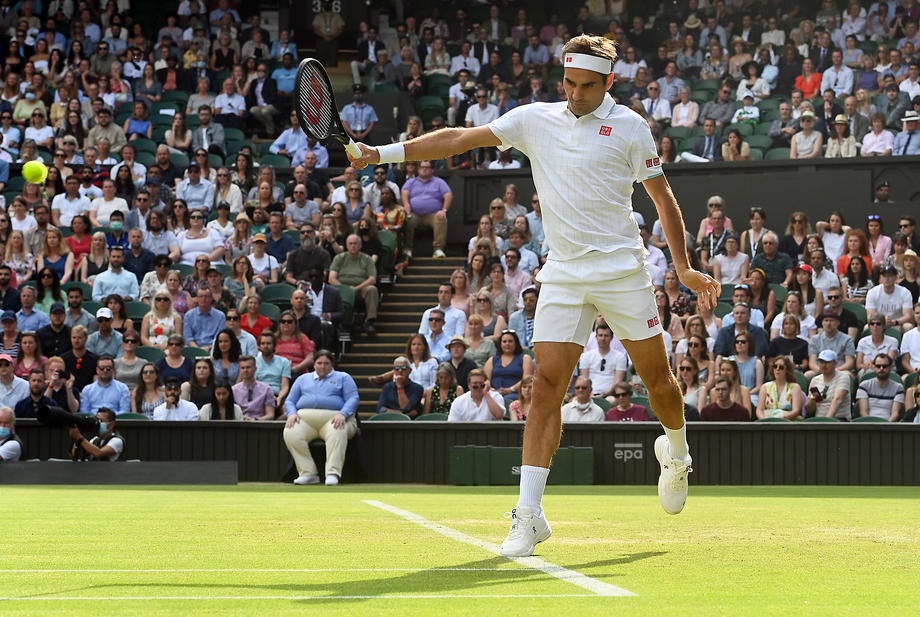- Ken Thomas Broadcasting from Georgia’s Rome Tennis Open
- Solinco Launches All-New Whiteout V2 Racquet
- Stringlet: Serving Up Tennis Inspiration With A Twist
- Davis Cup qualifying to feature Brazil vs. France and Spain vs. Switzerland
- 2025 US Open Expands to Sunday Start
- Tennis Channel To Broadcast U.S. Davis Cup Qualifier vs. Tawain
- Stefanos Tsitsipas Receives Rotterdam Wild Card From Richard Krajicek
- Tien and Basavareddy to Play Delray Beach Open Qualifying
- Australian Open Tennis 2025 Ends with Madison Keys and Jannick Sinner As Winners By Alix Ramsay
- 2025 Australian Open Final Draws
- Jannik Sinner Sweeps Alexander Zverev for Second Straight Australian Open Title
- Ricky’s pick for the Australian Open final: Sinner vs. Zverev
- Australian Open Draws and Order Of Play for Sunday, January 26, 2025
- Madison Keys Upsets Defending Champion Aryna Sabalenka in Australian Open Final Thriller
- Ricky’s pick for the Australian Open final: Sabalenka vs. Keys
Alix Ramsay Reports On Andy Murray’s Five Set Comeback Win At The 2020 US Open
- Updated: September 1, 2020

By Alix Ramsay
In 2012, Andy Murray took four hours and 54 minutes to win his first grand slam title by beating Novak Djokovic and lifting the US Open trophy. The Arthur Ashe Stadium was packed and it was gripped by the drama.
On Tuesday afternoon, he took four hours and 39 minutes on the very same court – this time all but empty thanks to the Covid-19 bio-bubble – just to reach the second round. No matter, the victory over the diminutive but cunning, slight but whippet-fast, Yoshihito Nishioka tasted just as sweet.
“I think it was pretty emotional straight after the match finished,” he said. “When I got back to the locker room, sort of look at my phone, see the messages from family and friends, the team and stuff. They’re the people that have kind of seen me go through everything, been there, seen the tough times. I don’t know how many of us actually believed I’d be back kind of winning matches like that.
“So, yeah, it was emotional after the match finished, for sure. It’s more like, yeah, when you read the messages from your family and friends and stuff, yeah, that’s kind of when you feel it. I don’t know why that is, but you do, or I do anyway. Today’s win meant a lot. Like I said, a lot’s gone into it.”

This was just the sort of battling, belligerent Murray performance that most of us thought would be beyond the Scot and his tin hip these days. Two spells on the operating table to end up with a fully resurfaced right hip together with three years of relative inactivity (he has only played 68 matches in that time) – not to mention reaching his 33rd birthday in May – surely would have taken too great a toll on his body. Surely not even Murray could beat the medical odds and compete over the best of five sets again. Oh, but he could. And he did. And he won 4-6, 4-6, 7-6, 7-6, 6-4.
For the first two-and-a-bit sets, though, the signs were not good. Nishioka may have little legs but he has a huge forehand which, when combined with his lightning speed and ability to find and create angles that seem all but impossible, makes for a deadly combination. He is currently ranked at No.49 in the world but higher reaches of the pecking order could easily beckon. Against such a tricky foe, Murray did not just look sluggish and careless, he looked lost.
“He has a tricky game,” Murray said. “Not easy to play against. Also, I felt a little bit at the beginning that I was pacing myself almost a little bit. Sort of happens at the beginning of your career when you haven’t played that many five-set matches.

“I kind of felt mentally I didn’t know how I was going to feel if I played a long one, so I didn’t want to use up too much energy. When you do that, maybe you don’t move as well, don’t play the right shots, and the match becomes much longer. So it’s completely counterproductive. I think psychologically it can happen when you’ve not played one for a long time.
“Probably once I’d won the third set really [I thought I could turn it around]. I was just starting to play a little bit better. I wasn’t feeling as under pressure on my serve. Yeah, just felt like, not that I was controlling all the points, I just felt like I was a little bit more in control of more points and was starting to understand the way I had to play to maybe win the match, which at the beginning I didn’t.”
From two sets and a break down, Murray’s mutterings became longer and louder as he gave his coach, Jamie Delgado, heaps from the back of the court. Delgado is used to it, mind you: he has been roundly abused for years by his employer and his friend. It is just Murray’s way on court and on Tuesday, Scotland’s finest needed to find something or someone to get himself fired up. If he could not find a decent argument to growl about, he would just have to blame Delgado for everything from his failing forehand to the state of the weather (pleasant but showery before the match began).
Even when he was playing much, much better in the latter stages of the match, Murray did not let up. He handed Delgado a racket to be restrung (he had busted two strings by then) and off scampered the loyal coach to do as he was asked. As soon as he had left the stadium, Murray berated Delgado for not being at the side of the court to cheer him on. When Delgado returned, Muzz reverted to more general complaints about his coach’s abilities, or lack thereof. ‘Twas ever Muzz.
But when he found himself facing defeat in straight sets, something inside Murray lit up. He began to serve with more precision and pace, he cut out the sloppy errors and he began to find his range with his forehand. In the first two sets, when he went forward, he overdid it; when he stayed back, he undercooked it. Now he was beginning to find the right balance. When he took the third set into a tiebreak, he went on attack to bludgeon Nishioka into submission.

He did the same in the fourth set, sidestepping a match point to force another tiebreak and another barrage of offensive forehands. And once into the fifth set, he could see that he had the Japanese rattled. A few tentative shots, a few errors appeared as Nishioka kept appealing to the heavens for help.
Even so, it was Nishioka who got the early break. Muzz broke straight back. He was running on empty but the 2012 champion was not going to lose this match if there was still breath left in his body.
Fortunately for Murray, the sponsors’ suites in the 23,000-seater Arthur Ashe Stadium have been allocated to the top seeds and to former champions – and they pretty much live in those suites when they are not playing, on the practice courts or in the gym. When they have the spare time, they watch the proceedings on the biggest show court in the world. And a lot of them were watching Muzz, even if some of them – like Naomi Osaka – were supporting Nishioka.

“That, for me, was one of the things that helped,” Muzz said. “It’s rare that you have lots of players watching your match. In some ways that can be a little bit distracting if you look up and you’ve got guys that are in the top five, top 10 in the world watching you and stuff.
“But for me, I had my father-in-law there. He was up in the suite watching me. I had my brother there with his coach watching. There was a few of the British players that came out to watch and support, as well.
“Although the atmosphere was very flat overall, at the end of the match and as I was starting to turn it around, I could at least look up and see some faces in different points of the court to give me a little bit of encouragement, which definitely, definitely helped.”
He had been asked as he walked on court, what he thought he would feel like if the match went to five sets. This took the Muzz by surprise; he hadn’t really considered that. But at the end of four hours and 39 minutes, he had his answer: “The biggest answer I got from the match today, was physically that I was good. Tennis-wise I could do better.”
After all he had been though since 2017, that was as good as winning the US Open outright.






